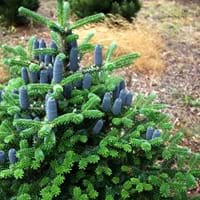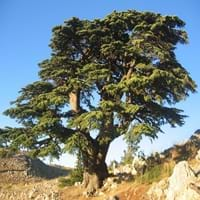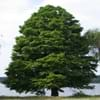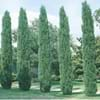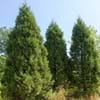Life Span
Perennial
Perennial
Type
Needled or Scaled Evergreen
Needled or Scaled Evergreen
Origin
Japan
Mediterranean, Turkey, Western Asia
Types
Not Available
Lebanon cedar, Turkish cedar
Number of Varieties
Not Available
Habitat
Rocky areas, stream banks, Woodland Garden Canopy
Mountains
USDA Hardiness Zone
3-6
5-9
Sunset Zone
A3, 1a, 1b, 2a, 2b, 3a, 3b, 4, 5, 6, 7, 8, 9, 14, 15, 16, 17
3a, 3b, 4, 5, 6, 7, 8, 9, 10, 14, 15, 16, 17, 18, 19, 20, 21, 22, 23, 24
Habit
Pyramidal
Spreading
Flower Color
Green, Orange, Purple
Light Green
Flower Color Modifier
Bicolor
Bicolor
Fruit Color
orange brown, Purple, Purplish-black, Voilet
Light brown, Light Green, Lime Green, Sandy Brown
Leaf Color in Spring
Dark Green, Silver
Light Green, Gray Green, Dark Green
Leaf Color in Summer
Dark Green, Silver
Gray Green, Dark Green
Leaf Color in Fall
Dark Green, Silver
Gray Green, Dark Green
Leaf Color in Winter
Dark Green, Silver
Gray Green, Dark Green
Leaf Shape
Needle like
Needle like
Plant Season
Spring, Summer, Fall, Winter
Spring, Summer, Fall, Winter
Sunlight
Full Sun, Partial Sun
Full Sun, Partial Sun
Type of Soil
Clay, Loam
Clay, Loam, Sand
The pH of Soil
Acidic
Acidic, Neutral, Alkaline
Soil Drainage
Average
Well drained
Bloom Time
Early Spring, Late Spring, Mid Spring
Mid fall
Tolerances
Drought
Drought
Where to Plant?
Container, Ground
Ground
How to Plant?
Seedlings, Semi-ripe cuttings
Seedlings, Semi-hardwood cuttings
Plant Maintenance
Medium
Medium
Watering Requirements
Average Water Needs, Do Not over Water, Requires regular watering
Never Over-water, Requires regular watering
In Summer
Lots of watering
Lots of watering
In Spring
Moderate
Moderate
In Winter
Average Water
Average Water
Soil pH
Acidic
Acidic, Neutral, Alkaline
Soil Type
Clay, Loam
Clay, Loam, Sand
Soil Drainage Capacity
Average
Well drained
Sun Exposure
Full Sun, Partial Sun
Full Sun, Partial Sun
Pruning
Remove damaged leaves, Remove dead branches, Remove dead leaves
Remove damaged leaves, Remove dead branches, Remove dead leaves
Fertilizers
All-Purpose Liquid Fertilizer
All-Purpose Liquid Fertilizer
Pests and Diseases
Whiteflies
Honey fungus, Root rot
Plant Tolerance
Drought
Drought
Flowers
Insignificant
None
Flower Petal Number
Single
Single
Fragrant Bark/Stem
Yes
Yes
Foliage Texture
Fine
Fine
Foliage Sheen
Glossy
Not Available
Allergy
allergic reaction, Anaphylaxis, Pollen, Respiratory problems, Runny nose
Asthma, Runny nose, Skin irritation
Aesthetic Uses
Showy Purposes, Used as Christmas tree
Landscape Designing
Beauty Benefits
Not Available
Not Available
Environmental Uses
Air purification
Air purification
Medicinal Uses
Not Available
Antiseptic, Expectorant, Respiratory Disorders
Part of Plant Used
Flowers, Inner Bark, Seeds
Branch, Leaves, Wood
Other Uses
Paper pulp, Wood is used for making furniture
Oil is used in perfume, soaps, creams, etc., Used as essential oil, Used for fragrance, Used for its medicinal properties, Used in construction
Used As Indoor Plant
No
No
Used As Outdoor Plant
Yes
Yes
Garden Design
Feature Plant, Screening, Wind Break
Feature Plant, Shade Trees
Botanical Name
Abies Veitchii
CEDRUS libani
Common Name
Christmas Tree, Veitch's Silver Fir
Lebanon cedar, cedar of Lebanon
In Hindi
Veitch's Silver Fir
लेबनान देवदार
In German
Veitch's Silver Fir
Libanon-Zeder
In French
Veitch's Silver Fir
Cèdre du Liban
In Spanish
Veitch's Silver Fir
Cedrus libani
In Greek
Veitch's Silver Fir
Λίβανος κέδρου
In Portuguese
Veitch's Silver Fir
Cedro-do-líbano
In Polish
Veitch's Silver Fir
Cedr libański
In Latin
S Veitch abiegnis
Cedrus libani
Phylum
Pinophyta
Coniferophyta
Class
Pinopsida
Pinopsida
Clade
Not Available
Not Available
Tribe
Not Available
Not Available
Subfamily
Not Available
Not Available
Importance of Veitch's Silver Fir and Cedar of Lebanon
Want to have the most appropriate plant for your garden? You might want to know the importance of Veitch's Silver Fir and Cedar of Lebanon. Basically, these two plants vary in many aspects. Compare Veitch's Silver Fir and Cedar of Lebanon as they differ in many characteristics such as their life, care, benefits, facts, etc. Every gardener must at least have the slightest clue about the plants he wants to plant in his garden. Compare their benefits, which differ in many ways like facts and uses. The medicinal use of Veitch's Silver Fir is Not Available whereas of Cedar of Lebanon is Antiseptic, Expectorant and Respiratory Disorders. Veitch's Silver Fir has beauty benefits as follows: Not Available while Cedar of Lebanon has beauty benefits as follows: Not Available.
Compare Facts of Veitch's Silver Fir vs Cedar of Lebanon
How to choose the best garden plant for your garden depending upon its facts? Here garden plant comparison will help you to solve this query. Compare the facts of Veitch's Silver Fir vs Cedar of Lebanon and know which one to choose. As garden plants have benefits and other uses, allergy is also a major drawback of plants for some people. Allergic reactions of Veitch's Silver Fir are allergic reaction, Anaphylaxis, Pollen, Respiratory problems and Runny nose whereas of Cedar of Lebanon have Asthma, Runny nose and Skin irritation respectively. Having a fruit bearing plant in your garden can be a plus point of your garden. Veitch's Silver Fir has showy fruits and Cedar of Lebanon has showy fruits. Also Veitch's Silver Fir is not flowering and Cedar of Lebanon is not flowering . You can compare Veitch's Silver Fir and Cedar of Lebanon facts and facts of other plants too.
